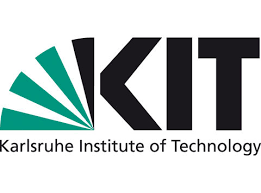Karlsruhe Institute of Technology: German Center for Mobility of the Future: Transport research in Karlsruhe strengthened
The mobility of the future must be sustainable, climate-neutral and affordable. This is where the German Center for Mobility of the Future (DZM), founded by the federal government, comes in. With the central hub in Munich, it bundles research and innovation, develops concepts for future-oriented mobility and offers various mobility ideas and research approaches a central platform. One of the locations of the DZM is Karlsruhe. The first research project “Country to City Bridge – C2CBridge” of several Karlsruhe institutions around mobility under the leadership of the Karlsruhe Institute of Technology (KIT) is now in the application phase. The aim is to examine how public transport can bridge the gap between rural and urban areas efficiently and attractively.
Karlsruhe stands for excellent mobility research in established cooperation structures
For Lord Mayor Dr. Frank Mentrup, who, together with the Vice President of KIT, Professor Thomas Hirth, welcomed the representatives of the DZM for the first personal meeting, “has set another milestone on the way to a model region for sustainable mobility. Karlsruhe stands for excellent mobility research in established cooperation structures such as the ‘Profile Region Mobility Systems Karlsruhe’. We want to build on these structures and successfully establish ourselves as a branch of the DZM, ”said the mayor at a press conference. The connection between town and country by means of innovative technology has a special tradition in Karlsruhe, emphasized Mentrup. “The pioneering achievement of the Karlsruhe model, which is recognized worldwide, in which the city and the country were linked for the first time with local public transport on trams and railways, laid the foundations. Now we want to work on new solutions with our broad and highly qualified research landscape. “
“Innovative technologies offer new possibilities through digitization, networking and automation”, says Professor Thomas Hirth, Vice President for Innovation and International Affairs at KIT. “With a broad interdisciplinary approach, we at C2CBridge will fully exploit this potential. The clear goal is to develop a really needs-based transport system and to offer a real alternative to private cars as a means of commuting. “
An optimal traffic system for rural areas looks different than one for the city, explained the coordinator of the C2CBridge project, Professor Frank Gauterin from the Institute for Vehicle System Technology at KIT. In dense, urban areas, transport systems would have to offer high capacity with little space requirement, whereas in rural areas it would primarily be necessary to develop the area. Classic public transport with its strong bundling of flows cannot serve the area economically, but the car needs too much space in the city.
Coupling flexible vehicles to form efficient networks
As a decisive component of a public transport offer that bridges the gap between the countryside and the city efficiently and attractively, the aim of Karlsruhe is to examine autonomous vehicles that operate individually and distributed across the area, but can be linked to efficient networks when moving into the city . Vehicles that would be electric, autonomous and networked should be used, explains Gauterin. Such a system of individualized public transport gives traffic planning more freedom and avoids the hard break between motorized individual transport and classic public transport. The vehicle concept from C2CBridge is not intended to replace established local transport, nor is it limited to bridging the last mile, So, for example, to ensure the way from the front door to the bus stop. Rather, it should be researched what the optimal combination of transport systems looks like and how the crossings should be designed.
Interdisciplinary approach
At C2CBridge, technical solutions are developed hand in hand with planning concepts: This includes analyzes of mobility processes and needs in different types of space such as urban and rural areas as well as the design and construction of prototypes of vehicles and mobility stations. To this end, the project brings together experts from the social sciences, spatial, urban and transport planning, geography, architecture, civil engineering, mechanical engineering, electrical engineering, computer science, mathematics and economics.
The work of the DZM and the strengths of the mobility location Karlsruhe continued to explain to the press: Dr. Julia Schmid, head of the DZM office, Dr. Klaus Bonhoff, Head of the Department for Policy Matters in the Federal Ministry of Transport and Digital Infrastructure (BMVI), Christoph Erdmenger, Head of the Sustainable Mobility Department in the Ministry of Transport Baden-Württemberg.
The following partners are involved in the C2CBridge project:
Karlsruhe Institute of Technology (KIT) with 15 institutes, FZI Research Center for Information Technology, Fraunhofer-Gesellschaft (Fraunhofer ICT, IOSB and ISI), University of Karlsruhe with two institutes, University of Pforzheim, Albtal-Verkehrs-Gesellschaft (AVG), PTV Group and City of Karlsruhe .
As “The Research University in the Helmholtz Association”, KIT creates and imparts knowledge for society and the environment. The aim is to make significant contributions to global challenges in the fields of energy, mobility and information. To this end, around 9,600 employees work together on a broad disciplinary basis in the natural, engineering, economics, humanities and social sciences. The KIT prepares its 23,300 students for responsible tasks in society, economy and science through a research-oriented university course. The innovation activity at KIT bridges the gap between knowledge and application for social benefit, economic prosperity and the preservation of our natural foundations of life.

